Generalmajor Joachim Lemelsen (26.6.1888–30.3.1954) had SS-Obermusikmeister Müller-Jon of the SS-Leibstandarte arrested for the murder of 15 Jewish civilians and demanded that he be tried by Army Group. See Thun-Hohenstein, ‘Verschwörer’, p. 184. Between 21 and 28.9.1939 the LAH fought alongside 29.Inf.Div./XV.Armeekorps under General Hoth north of Warsaw around the Modlin fortifications. Sponeck was Hoth’s Ia, and his account therefore has a high degree of plausibility. For the general context see Cüppers, ‘…auf eine so saubere und anständige SS-mässige Art: Die Waffen-SS in Polen, 1939–1941’.
There is no record of such an order.
Vyasma/Viasma.
Nothing else is known about the engagement of partisans by Spang’s 266.Inf.Div. See Introduction, note 223 223 He reported on the anti-partisan war at GRGG 172, 8–12.8.1944, TNA WO 208/4363. The 266.Inf.Div. War Diary has no valuable information about engagements between the Division and partisans. BA/MA RH26-266-9 (June – July 1944).
.
Up to December 1941, 2,365 Jews were murdered at Gomel, and buried at Letshshinez on the road to Rechiza. ‘Enzykloädie des Holocaust’, Vol. 1, p. 552.
From 16 to 31.10.1943 (personnel file says 30.11.1943), Menny led 123.Inf.Div. defending the Dnieper island of Chortiza, where he sustained heavy losses. Menny remained on the island constantly and led his units successfully in the defence and counter-attack. It is certain that this division was not transferred to the Eastern Front from Norway. Possibly the event involved 333.Inf.Div., which Menny commanded from 7.6.1943 to 15.10.1943, and which came to Russia from France , being wiped out in October around Zaporoshye on the Dnieper. BA/MA Pers 6/750.
Zaporoshye.
It is not known to which camp Broich was referring.
Meant here is the later Generalleutnant Hans von Graevenitz (14.7.1894–9.12.1963), 1.8.1938–31.3.1943 Chief of OKW Assistance and Supply. The meeting between Broich and Graevenitz must have taken place before the latter’s promotion to Generalmajor on 1.2.1942.
During World War II around 5.7 million Russian prisoners passed through German hands. The exact number of those failing to survive captivity is estimated by Streit (‘Keine Kamaraden’, pp. 244–9) at 3.3 million, by Streim (‘Behandlung’, p. 246) at 2.53 million. The numbers for August 1944, when this conversation was recorded, were not much lower.
Nothing has been found in the archives regarding this incident. For the general context see Lappenküper, ‘Der Schlächter von Paris’.
Meant here is the steel magnate Albert Vögler (8.2.1877–14.4.1945), Chairman of the Board, Vereinigte Stahlwerke (United Steelworks), Düsseldorf. During the war he served the Armaments Ministry as General Plenipotentiary for the Ruhr.
Eberbach is probably referring here to Himmler’s speech to Wehrmacht generals at Sonthofen on 5.5.1944 on ‘The Final Solution to the Jewish Question’, in which he said, ‘Had we not excluded the Jews from Germany, it would not have been possible to have endured the bomber offensive.’ On 24.5.1944 Himmler addressed the generals at Sonthofen on the same theme. He could have spoken to Eberbach on this occasion. Himmler, ‘Geheimreden’, p. 202. For the Sonthofen speeches, see Förster, ‘Geistige Kriegführung’, p. 606f.
It is not known where Choltitz carried out these shootings of Jews. Presumably they occurred in his time as regimental commander in the Crimea, 1941/42, see note 285 285 The major mass shooting of Jews in the Crimea took place at Simferopol between 13 and 15.12.1941, when units of Einsatzgruppen D shot 10,000 to 11,000 people in the city park. Inf.Reg.16 commanded by Choltitz was at Sevastopol at this time. What massacre was observed by the regimental officer is unknown. The total number of victims of genocide in the Crimea is estimated at about 40,000. ‘Enzyklopädie des Holocaust’, Vol. 2, p. 821f. For the involvement of local military field offices in the Holocaust see Oldenburg, ‘Ideologie und militärisches Kalkül’, pp. 159–224.
below.
There are no court-martial papers for 20.Pz.Div. at the Bundesarchiv Kornelimünster, and so this case cannot be examined.
Later he admitted to having carried out only three death sentences on German soldiers. GRGG 228, 24–26.11.1944, TNA WO 208/4364. Nothing is known about these executions, and Ramcke did not mention them in a comprehensive signal describing the situation on taking over the fortifications, see 1.Skl.27479/44 gKdos 5.9.1944 BA/MA RM7/149, nor were executions mentioned in a long report from Oberleutnant (Naval Artillery) Jenne, AII to the Naval Commandant, Brittany, who escaped to Lorient on 10.9.1944 aboard a KFK, nor in a report by Naval Commandant Konteradmiral Kähler to the Lorient harbour commander. ‘Kampf um Brest, Bericht Oberlt.(MA) Jenne, AII Seekommandant Bretagne’, BA/MA RM 35II/68.
Meant here is Gzhatsk (or Gshask) 200 kilometres east of Smolensk on the main highway to Moscow.
Seyffardt refers here to the transportation of about 673,000 PoWs from the battles at Viasma and Briansk in October 1941 in which he was involved as CO, Inf.Reg.111/35.Inf.Div./3.Pz.Armee. The prisoners were force-marched cross-country as the crow flies for 150–250 kilometres to Smolensk before being entrained for PoW camps in the ‘Reich Commissariat Ostland’. The death rate was very high, exact numbers are not known. Streit, ‘Keine Kamaraden’, pp. 162–71, Gerlach, ‘Kalkulierte Morde’, pp. 843–8.
Heyking was probably talking here of Himmler’s speech to the generals at Sonthofen on 5.5.1944 in which he said, ‘You may imagine how heavy a burden it was for me to carry out this order, which I obeyed and executed from obedience and utter conviction’, Himmler, ‘Geheimreden’, p. 202.
From the surviving files at BA/MA it is not apparent if Inf.Reg.16, commanded by Choltitz, enforced the Commissar Order or not.
Army C-in-C Brauchitsch, Chief of the Army General Staff Halder, C-inC Army Group A von Rundstedt, Army Group B von Bock and Army Group C von Leeb all spoke out strongly against the early attack on France demanded by Hitler. Frieser, ‘Blitzkrieg-Legende’, pp. 110–15. For an introduction to the associated coup plans see Peter Hoffmann, ‘Staatsstriech’, pp. 165–86.
Even Eberbach remarked that Ramcke had systematically destroyed Brest. GRGG 214, 20–23.10.1944, TNA WO 208/4363. Oberleutnant Jenne (see note 267 267 Later he admitted to having carried out only three death sentences on German soldiers. GRGG 228, 24–26.11.1944, TNA WO 208/4364. Nothing is known about these executions, and Ramcke did not mention them in a comprehensive signal describing the situation on taking over the fortifications, see 1.Skl.27479/44 gKdos 5.9.1944 BA/MA RM7/149, nor were executions mentioned in a long report from Oberleutnant (Naval Artillery) Jenne, AII to the Naval Commandant, Brittany, who escaped to Lorient on 10.9.1944 aboard a KFK, nor in a report by Naval Commandant Konteradmiral Kähler to the Lorient harbour commander. ‘Kampf um Brest, Bericht Oberlt.(MA) Jenne, AII Seekommandant Bretagne’, BA/MA RM 35II/68.
above) wrote in his report from Brest, ‘To clear the bomb damage, parties were assembled from Organisation Todt and railwaymen from the beginning. Their primary job was to keep the main supply routes open and carry out repairs. The Fortification Commandant decided later to burn down the area along the arterial road and blow up the walls to collapse inwards upon themselves. This was to avoid undesirable masses of rubble falling on the supply route in later air raids.’ ‘Kampf um Brest, Bericht Oberlt.(MA) Jenne, AII Seekommandant Bretagne’, BA/MA RM 35II/68.
Читать дальше

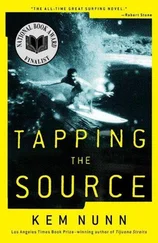
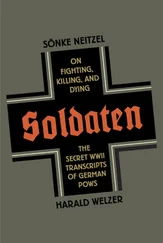

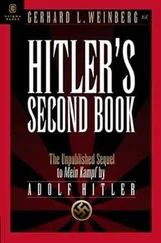
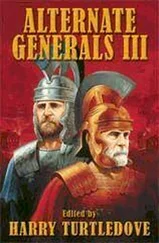
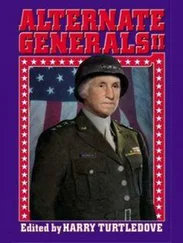

![Traudl Junge - Hitler's Last Secretary - A Firsthand Account of Life with Hitler [aka Until the Final Hour]](/books/416681/traudl-junge-hitler-s-last-secretary-a-firsthand-thumb.webp)



